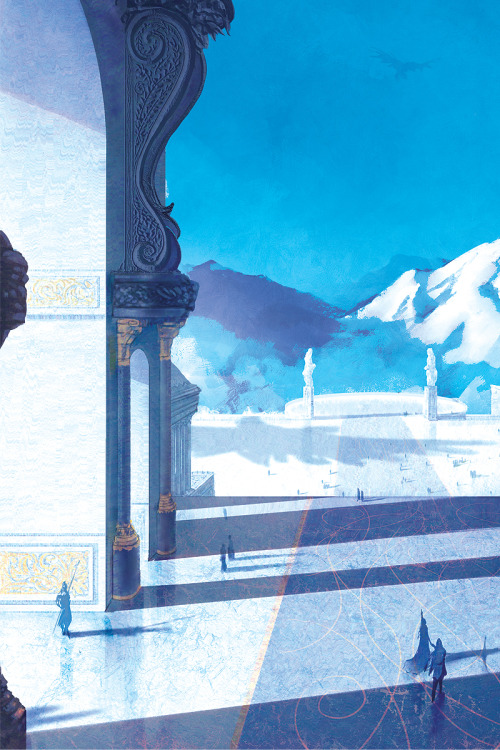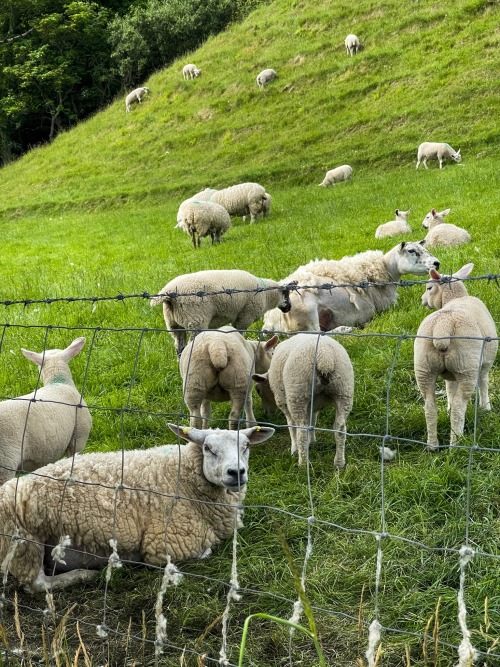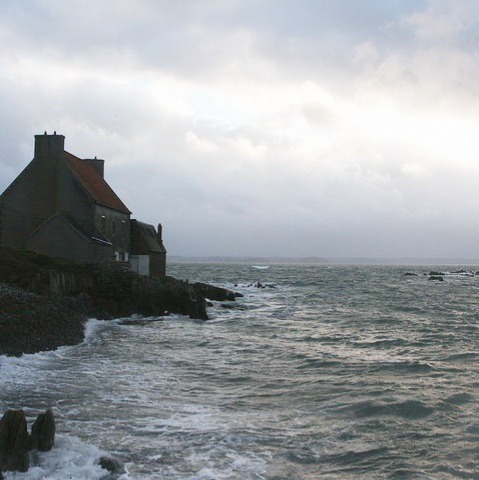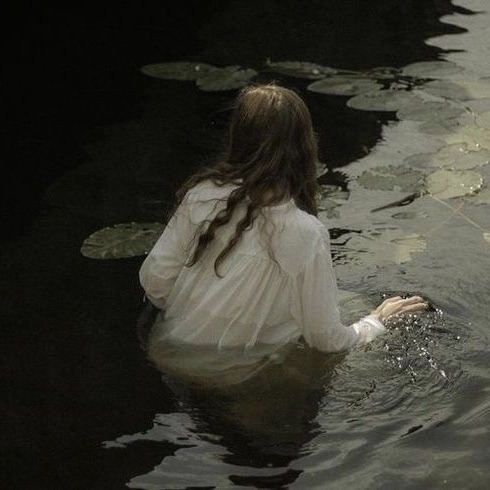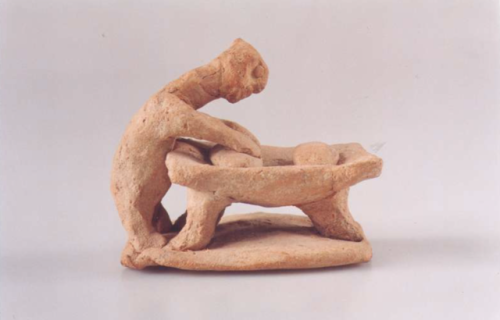
Raia. 20 years old. Gaelic Polytheist & Lugh Devotee.
74 posts
Latest Posts by honeywheats - Page 2

Lugh Lamhfada
Lugh is a god of every skill and many domains, I was determined to make this the most accurate depiction of Lugh possible, based on Celtic mythology, history, and archaeology, with the generous help of Kevin MacLean, a master of mythology and Lugh in particular.
Every detail has symbolism, and his weapons and attire are historically inspired.
Lughnasa Blessings!
Please check out my kickstarter and share it around, it would help me out a lot! https://www.kickstarter.com/projects/ireao/lugh-lamhfada-the-many-skilled-celtic-god
Does anyone else on the pagan community feel genuine love for their deities? Not in the romantic sense, but more in the way you love a family member. It's especially strong coming from a religion where you never felt a genuine connection to "your" God. You felt fear, obligation, confusion, curiosity, and maybe love on some level, but this love is different.
It is finally understanding the feeling people around you described from being in church every Sunday. It's growing up finding the congregation's hands in the air, the singing and crying, the raw emotion to be... unusual, strange. What were they feeling? How can I feel this way? You try to forge that connection, but you're never successful. You start to doubt the God you grew up with. You wonder if he hates you, or if you're not trying hard enough — if you're broken.
...Then, one day, you find what you've been searching for all this time, somewhere else. You experience the feeling of finally meeting your soulmate, finally finding your place or your tribe. You experience the pure joy, the peace, the childlike wonder, the longing, the wisdom, the bond, the reverence, the admiration. You experience an unfamiliar tightness In your chest when you pray to them or make offerings.
I've never felt more in love than I am with my gods. Ive never felt more at home, more at peace.
I hope to feel this way for the rest of my days, because what is life without the gods? What is life without something beyond this world, yet at the same time, an integral part of understanding the meaning of existence on this physical plane — on this planet?
“i don’t like writing about my day, but i want to keep a journal”:
quotes and copywork. when reading, if you find something you enjoy, just copy it into the notebook. you can copy a whole chapter if you wish, highlighting what caught your attention the most.
definitions. look up on a dictionary and copy it. you could write your own dictionary as well, making up definitions for words.
lists. a classic, write movies to watch, books to read, the playlist of the month or just the groceries you have to buy.
maps. when going somewhere, you could draw the route you took or just a map of the place itself. just look up the place on google maps and copy it. you can draw a little map of all the places you have lived or the schools you have attended as well.
photos
take “notes” as you watch movies / documentaries. write down phrases that caught your attention or doodle.
illustrations and clippings. if you see an image or piece of art that you liked, put it in your journal. if it’s from a book or from a magazine I would recommend scanning it, tho’. it will serve as a record of what kind of art you enjoy through the years.
newspaper clippings from the day.
tickets and pamphlets. from movies, museums, transportation.
postcards
records. you could record for a month what the temperature was when you woke up and when you went to sleep. if you do that for a year, it gives you a better notion of the passing of seasons. you could record rainfall and other seasonal changes as well. you could choose something (an animal, a plant, an item or object) and write down every time you see it.
rubbings of leaves, coins, landmarks.
count. there’s a scene in the movie Coraline (2009) where Coraline’s dad tells her to go count the windows. you could do the same type of counting game if you are bored and write down.
mindmaps/sketchnotes + timelines of books, movies, music albums.
collages
pressed leafs and flowers
your collections. if you collect anything you could write down an inventory or maybe try to draw the items.
recipes. write down recipes and give it a score every time you try it. you could do the same for drinks you try out.
stickers
comic strips. you can find a bunch of it online, glue your favorites in your notebook.
Catalpa blossoms falling and floating while a chipmunk poses on the stream bank this morning. Woodpecker hammering a tree somewhere nearby.
I made this today (literally about 30 minutes ago after I finished making a workout log for April) because I got an idea about making devotions a little bit easier for new polytheists as well as more established ones. The layout is pretty simple and allows you to keep track of what deity you prayed to, the date, any offerings that were made, etc. I’ve also included a journaling option. Also (and though it’s not viewable in the pictures below), I’ve left enough room around the borders so people could do their drawings or whatnot. I’m more than happy to provide the documents I created since the pics aren’t that great via email or messenger.
Update: Okay, I think I fixed it so now people can download and begin their devotional book.

I AM A WIND IN THE SEA I am a sea-wave upon the land I am the sound of the sea I am a stag of seven combats I am a hawk on a cliff I am a tear-drop of the sun I am the fairest of flowers I am a boar for valour I am a salmon in a pool I am a lake in a plain I am the excellence of arts I am a spear that wages battle with plunder I am a god who forms subjects for a ruler Who explains the stones of the mountains? Who invokes the ages of the moon? Where lies the setting of the sun? Who bears cattle from the house of Tethra? Who are the cattle of Tethra who laugh? What man, what god, forms weapons? Indeed, then; I invoked a satirist... a satirist of wind. The Book of the Takings of Ireland tells the story of six races that came to the island: the Cessarians, the Partholónians, the Nemedians, the Fir Bolg, the Tuatha Dé Danann, and lastly the Milesians, who were the ancestors of the modern Gaels. According to the legend, the bard Amergin Glúingel, one of the seven sons of Mil, recited this poem as he set his foot upon the land of Ireland for the first time.
The Song of Amergin is the most famous example of old Irish rosc poetry, and its vivid, cryptic imagery has captured imaginations for centuries, inspiring theories, stories, and songs of its own.
(Translation adapted from the Celtic Heroic Age by Koch & Carey)
Glögg: an ancient drink!🍷

✒️Hello everyone! Today I bring you a bit of European history and gastronomy, focusing on an ancient Scandinavian drink called "Glögg", which I had the pleasure to taste last night. Sources can be find at the end in APA formar!
What is Glögg?
Glögg or glogg (Danish: gløgg, Norwegian: gløgg, Swedish: glögg, Icelandic: glögg, Faroese: gløgg, Finnish: glögi, Estonian: glögi) is a spiced, usually alcoholic, mulled wine or spirit. It is a traditional Nordic drink that has been drunk since ancient times during the cold winters, and later, to celebrate Christmas.
Nowadays many people drink this drink at "Christmas", the Christian celebration, however, we know very well that it was an appropriation of pagan festivities.

In the Nordic countries, drinking mulled wine is a tradition that dates back to the 16th century. It was drunk especially by messengers and postmen who travelled on horseback or skis in cold weather.

How the Nordic countries gave us Christmas:
Long before Christianity had come to the Nordic regions, the pagans and other ancient Germanic peoples would celebrate the winter solstice each December, the time of year when the days were the shortest and the night's the longest. Friends and relatives would get together and enjoy food and drink in a festival known as Yule.
As Christianity swept across Germanic Europe centuries ago, many Yuletide traditions were adopted and absorbed into the Christian faith, mixing together to create the modern Christmas we celebrate today.
Source: UK History blog.

Traditional Swedish Glögg recipe:
You can find the recipe right here!🍷🍂

Sources:
How the Vikings gave us Christmas. (n.d.). Sky HISTORY TV Channel. Retrieved September 2, 2021, from https://www.history.co.uk/articles/how-the-vikings-gave-us-christmasWikipedia contributors. (2021, July 31). Glögg.
Wikipedia. https://en.m.wikipedia.org/wiki/Gl%C3%B6gg

The god Lugh was worshiped in Ireland as a deity of the sun. This connection with the sun may explain his name (it means “shining one”), and it also may account for the attributes that he displayed: he was handsome, perpetually youthful, and had a tremendous energy and vitality. This energy manifests itself especially in the number of skills he had, according to legend, mastered. In fact, there was a tale that related Lugh’s myriad abilities at arts and crafts.
As told in the Battle of Magh Tuiredh, the god traveled to Tara, and arrived during a tremendous feast for the royal court. Lugh was greeted at the door by the keeper of the gate, and was immediately asked what talent he had - for it was a tradition there that only those who had a special or unique ability could enter the palace. The god offered his reply: “I am a wright”. In response, the gate keeper said: “We already have a wright. Your services are not needed here”. Still, Lugh, not to be so easily dismissed, continued: “I am a smith”. Again, the guard retorted that the court had a smith that was quite adequate; but the god was not to be dissuaded. In short order, he noted that he was also a champion, a harper, a hero, a poet, an historian, a sorcerer, and a craftsman. To this list, the gate keeper merely nodded his head, and stated matter of factly that all of these various trades were represented in the court by other members of the Tuatha de Danaan. “Ah, but you do have an individual who possesses all of these skills simultaneously?”, was Lugh’s clever and inspired reply. The guard was forced to admit his defeat, and so Lugh was allowed to enter and join the festivities.
According to Celtic mythology, Lugh was the son of Cian and Ethlinn. After the god Nuada was killed in the Second Battle of Magh Tuiredh, Lugh became the leader of the Tuatha De Danaan (the term for the gods and goddesses who descended from the goddess Danu).
Juniper

Juniper is known for its stimulating and mind-clearing properties and its cleansing and purification of the atmosphere. Its also known for its calming and relaxing effect on the nerves, and its sharpening of mental awareness and alertness.
When burned Juniper clears negative energies but it can also create a safe, protective, positive and healing space when that negative energy is removed.
In Scottish folk magic juniper was used to sain (bless, purify) objects, people, places and livestock. This purification process was there to remove influences that might be overlooked or to remove negative spirits. Juniper is the most used plant to sain with but Rowan was also used regularly. They would usually sain a new house by burning juniper in every room enough to fill the whole house with smoke and they would sit in the house until they coughed from the smoke, this was also done every new year as well.
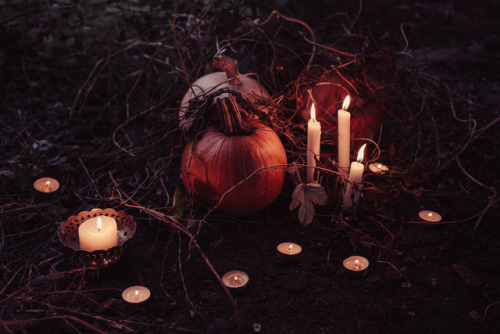
Samhain Witch Tips - 🎃 Pumpkins 🎃
Carving pumpkins is definitely not just for little kids. Carve sigils, spells, significant imagery, or anything you want into your pumpkin and fill it with your intention with each cut.
If you’re a closeted witch, carve your witchy stuff (sigils, spells etc) into the inside of the pumpkin, and make the outside just a fun design.
Anoint your tea light or votive candle with herbs and oils to match your intention for the season or year. I personally like to make a couple of these and have them lit while I carve as well as use them in the pumpkin/jack-o-lantern.
Before setting your candle into your pumpkin, sprinkle the insides with herbs that match your intentions and maybe some that have some anti-microbial action as well to help your pumpkin last longer before rotting. Cinnamon and cloves are great for this. The warmth from your candle will release your intentions as well as a lovely scent.
If you want to really absorb all the lovely goodness of the work you’ve put into carving this pumpkin, buy a pie pumpkin (sometimes called sugar pumpkin) carve it the night or day before your Samhain celebration, only use safe, culinary herbs inside and keep an unscented candle lit in it (make sure you only use either a soy or beeswax candle with a cotton, unleaded wick,) and the next day you can roast it in the oven (350*F for about an hour usually does it, or until it’s soft enough to easily sink a fork into) And then share this lovely squash with your spirit friends, witchy friends, family etc at your Samhain meal.
Pumpkins and all other winter squash actually keep for a very long time if stored properly. So you can buy a bunch from a farmers market now while they’re in season. Give them a rinse in a diluted bleach and water solution to kill off any mold spores that might cause premature rotting. Then make them part of your Samhain decor to imbue them with your good intentions and then store them in a garage or somewhere else that stays between 50-60*F and you’ll have delicious, enchanted squash all season long! I’ve had some last for up to 4 months before.
Enjoy this lovely seasonal fruit and may it nourish you all season long
🎃 ✨To support me: Get tarot reading | Buy me a coffee | Donate to my Education ✨Help Paul get MS treatment

